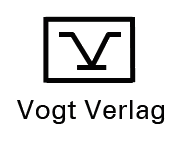Details
| Autor: | Thomas Kaden |
| Titel: | Objektorientierte Modellierung und Simulation von optomechatronischen Systemen mit Modelica |
| Typ: | Dissertation |
| Fachgebiet: | Automatisierungstechnik |
| Auflage: | 1 |
| Sprache: | Deutsch |
| Erscheinungsdatum: | 18.12.2012 |
| Lieferstatus: | Lieferbar |
| Umfang: | 174 Seiten |
| Bindung: | Soft |
| Preis: | 49,00 EUR |
| ISBN: | 9783938860588 |
| Umschlag: | (vorn) |
| Inhaltsverzeichnis: | (pdf) |
Abstrakt in Englisch
Optomechatronic systems encapsulate mechanical, electrical and optical components to fullfill their specific product task. Examples are systems for optical signal processing, interferometer and adaptive/active controlled telescopes. The design process of such complex systems requires an integrative software tool for modeling and simulation. The object oriented modeling language Modelica established over the last years for modeling heterogeneous systems. In addition to various model libraries there are several commercial or open source software tools available. Up to now however there exists no model library for the simulation of optical components or systems. Therefore in this work diffractive optical models based on the angular spectrum of plane waves are integrated in a modular way into Modelica. To achieve this goal a concept is used that allows Modelica to quickly process the neccessary two- dimensional signals (in particular matrix calculation). Additionally optical interfaces are introduced in form of cut planes in space and the behavioural description of optical components is stated. Abstract classes are used to describe the coupling between optics and the multibody system for transmissive and reflective optical components. This functionality can be used by specialized optical components due to inheritance. A diffractive optical library is developed and the function is proved by optomechanical systems including a Fourier optical system, a micromirror in a reflective setup and a closed-loop controlled Michelson-Interferometer.
Abstrakt in Deutsch
Optomechatronische Systeme vereinen mechanische, elektrische und optische Komponenten. Beispiele sind Systeme zur optischen Signalverarbeitung, Interferometer oder adaptiv/aktiv geregelte Teleskope. Der Entwurf dieser komplexen Systeme erfordert Softwarewerkzeuge zur rechnergestützten Modellbildung und Simulation. Die objektorientierte Modellierungsumgebung Modelica hat sich in den letzten Jahren zur Modellierung von heterogenen Systemen etabliert. Neben umfangreichen Modellbibliotheken existieren eine Reihe von frei oder kommerziell erhältlichen Softwarewerkzeugen. Bisher fehlt jedoch eine Modellbibliothek zur Simulation von optischen Komponenten und Systemen. In dieser Arbeit werden diffraktive optische Modelle modular in Modelica integriert. Dafür wird ein Konzept entwickelt, um die notwendige 2D-Signalverarbeitung schnell durchzuführen. Darauf aufbauend werden die optischen Schnittstellen in Form von Ebenen im Raum und die Verhaltensbeschreibung von optischen Komponenten definiert. Die Kopplung der Optik an die Mehrkörpermechanik für transmissive und reflektive optische Komponenten wird in einer Reihe von virtuellen Klassen implementiert. Durch Vererbung wird diese Funktionalität an spezialisierte opti sche Komponenten übergeben und eine diffraktive Optik-Bibliothek entwickelt. Die Funktion wird durch Simulationsmodelle von repräsentativen optomechatronischen Systemen gezeigt. Dazu zählen ein fourieroptisches 4f-System, ein Mikrospiegel in reflektiver Anordnung und ein aktiv stabilisiertes Michelson-Interferometer.


